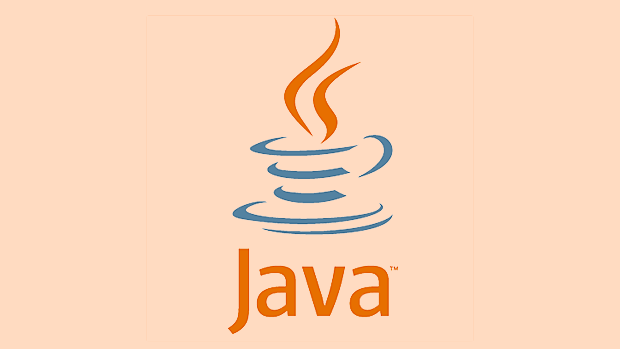Optimizing Memory Usage in Java Applications
Use efficient data structures like ArrayList over LinkedList and primitive collections to reduce overhead; 2. Minimize object creation by reusing objects, using StringBuilder for concatenation, and caching expensive objects; 3. Prevent memory leaks by nullifying references, using static inner classes, unregistering listeners, and employing weak/soft references in caches; 4. Tune the JVM with appropriate heap size, select suitable garbage collectors (e.g., G1GC, ZGC), enable GC logging, and use monitoring tools like VisualVM or Prometheus with Micrometer; 5. Optimize String and array usage by avoiding unnecessary interning, being cautious with substring(), and trimming array sizes—efficient memory management in Java requires smart coding, proper tooling, and JVM awareness to reduce object churn and improve performance.

Java applications can consume more memory than necessary if not carefully designed, leading to performance issues, longer garbage collection pauses, and even OutOfMemoryError exceptions. Optimizing memory usage isn’t just about increasing heap size—it’s about writing efficient code and understanding how the JVM manages memory. Here are key strategies to reduce memory footprint and improve efficiency.

1. Use Appropriate Data Structures
Choosing the right data structure can significantly impact memory usage.
-
Prefer
ArrayListoverLinkedListfor most use cases—LinkedListstores each element in a node with references to next and previous nodes, consuming more memory. -
Use primitive collections when possible. Standard Java collections (
List<integer></integer>,Map<string double></string>) store objects, which include overhead. Libraries like Trove, FastUtil, or Eclipse Collections offer memory-efficient collections for primitives (e.g.,TIntArrayListinstead ofArrayList<integer></integer>). - Avoid storing unnecessary data. For example, use
Setinstead ofListif you only need uniqueness and don’t care about order.
// Less efficient List<Integer> list = new ArrayList<>(); list.add(42); // Autoboxing: creates Integer object // More efficient (with Trove) TIntArrayList list = new TIntArrayList(); list.add(42); // Stores int directly
2. Minimize Object Creation and Reuse Where Possible
Every object created adds pressure to the heap and garbage collector.

- Reuse objects using object pools for expensive or frequently created instances (e.g., database connections, threads—though prefer built-in executors).
- Use builders or flyweight patterns when dealing with similar object configurations.
- Avoid unnecessary string concatenation in loops—use
StringBuilderinstead.
// Bad: creates multiple intermediate strings
String result = "";
for (String s : strings) {
result = s;
}
// Good: single StringBuilder
StringBuilder sb = new StringBuilder();
for (String s : strings) {
sb.append(s);
}
String result = sb.toString();- Cache expensive objects like
DateFormat,Pattern, or configuration data instead of recreating them.
3. Control Object Lifetimes and Avoid Memory Leaks
Even unused objects can linger in memory if references are unintentionally held.
- Nullify references in long-lived objects when no longer needed (rarely needed in modern Java but relevant in caches or listeners).
- Watch for inner class leaks: non-static inner classes hold an implicit reference to the outer class. Use
staticinner classes when possible. - Unregister listeners (e.g., event, observer patterns) to prevent accumulation.
- Be cautious with caches—use weak/soft references or bounded caches (e.g.,
Caffeine,Guava Cache) instead of plainHashMap.
// Prefer weak references for caches Map<Key, WeakReference<Value>> cache = new HashMap<>();
- Common leak sources:
- Static collections that grow indefinitely
- Unclosed streams or resources (use try-with-resources)
- ThreadLocal variables in application servers (especially with thread pooling)
4. Tune the JVM and Monitor Memory Usage
Even well-written code benefits from proper JVM configuration and monitoring.

Set appropriate heap size:
-Xms512m -Xmx2g
Avoid setting
-Xmxtoo high—large heaps can lead to long GC pauses.Choose the right garbage collector:
- G1GC (default in Java 9 ): good for medium to large heaps with low pause time goals.
- ZGC or Shenandoah (Java 11 and 12 respectively): for very large heaps with ultra-low pause times (<10ms).
Enable GC logging to analyze behavior:
-Xlog:gc*,gc heap=debug,gc stats -Xlog:gc:/var/log/gc.log
-
Use monitoring tools:
- VisualVM, JConsole, or JMC (Java Mission Control) for real-time analysis.
- Prometheus Micrometer for production monitoring.
- Heap dumps (
jmap -dump) analyzed with Eclipse MAT to find memory hogs.
-
Avoid string interning unless necessary—
String.intern()stores strings in the permgen/metaspace and can cause memory issues. - Use
String.substring()carefully in older Java versions (pre-Java 7u6): it shared the underlying char array. Modern versions copy data. - Trim array sizes—don’t pre-allocate large arrays unless needed. Consider using
ArrayListwith controlled growth.
5. Optimize String and Array Usage
Strings and arrays are common memory consumers.
Optimizing memory in Java is a mix of smart coding practices, proper tooling, and understanding JVM behavior. Focus on reducing object churn, choosing efficient data structures, eliminating leaks, and monitoring with real data. Small changes can lead to big improvements in scalability and responsiveness.
Basically, it's not about writing less code—it's about making every byte count.
The above is the detailed content of Optimizing Memory Usage in Java Applications. For more information, please follow other related articles on the PHP Chinese website!

Hot AI Tools

Undress AI Tool
Undress images for free

Undresser.AI Undress
AI-powered app for creating realistic nude photos

AI Clothes Remover
Online AI tool for removing clothes from photos.

Clothoff.io
AI clothes remover

Video Face Swap
Swap faces in any video effortlessly with our completely free AI face swap tool!

Hot Article

Hot Tools

Notepad++7.3.1
Easy-to-use and free code editor

SublimeText3 Chinese version
Chinese version, very easy to use

Zend Studio 13.0.1
Powerful PHP integrated development environment

Dreamweaver CS6
Visual web development tools

SublimeText3 Mac version
God-level code editing software (SublimeText3)
 Comparing Java Frameworks: Spring Boot vs Quarkus vs Micronaut
Aug 04, 2025 pm 12:48 PM
Comparing Java Frameworks: Spring Boot vs Quarkus vs Micronaut
Aug 04, 2025 pm 12:48 PM
Pre-formanceTartuptimeMoryusage, Quarkusandmicronautleadduetocompile-Timeprocessingandgraalvsupport, Withquarkusoftenperforminglightbetterine ServerLess scenarios.2.Thyvelopecosyste,
 Volume keys on keyboard not working
Aug 05, 2025 pm 01:54 PM
Volume keys on keyboard not working
Aug 05, 2025 pm 01:54 PM
First,checkiftheFnkeysettingisinterferingbytryingboththevolumekeyaloneandFn volumekey,thentoggleFnLockwithFn Escifavailable.2.EnterBIOS/UEFIduringbootandenablefunctionkeysordisableHotkeyModetoensurevolumekeysarerecognized.3.Updateorreinstallaudiodriv
 How to compare two strings in Java?
Aug 04, 2025 am 11:03 AM
How to compare two strings in Java?
Aug 04, 2025 am 11:03 AM
Use the .equals() method to compare string content, because == only compare object references rather than content; 1. Use .equals() to compare string values equally; 2. Use .equalsIgnoreCase() to compare case ignoring; 3. Use .compareTo() to compare strings in dictionary order, returning 0, negative or positive numbers; 4. Use .compareToIgnoreCase() to compare case ignoring; 5. Use Objects.equals() or safe call method to process null strings to avoid null pointer exceptions. In short, you should avoid using == for string content comparisons unless it is explicitly necessary to check whether the object is in phase.
 How to join an array of strings in Java?
Aug 04, 2025 pm 12:55 PM
How to join an array of strings in Java?
Aug 04, 2025 pm 12:55 PM
Using String.join() (Java8) is the easiest recommended method for connecting string arrays, just specify the separator directly; 2. For old versions of Java or when more control is needed, you can use StringBuilder to manually traverse and splice; 3. StringJoiner is suitable for scenarios that require more flexible formats such as prefixes and suffixes; 4. Using Arrays.stream() combined with Collectors.joining() is suitable for filtering or converting the array before joining; To sum up, if Java8 and above is used, the String.join() method should be preferred in most cases, which is concise and easy to read, but for complex logic, it is recommended.
 python logging to file example
Aug 04, 2025 pm 01:37 PM
python logging to file example
Aug 04, 2025 pm 01:37 PM
Python's logging module can write logs to files through FileHandler. First, call the basicConfig configuration file processor and format, such as setting the level to INFO, using FileHandler to write app.log; secondly, add StreamHandler to achieve output to the console at the same time; Advanced scenarios can use TimedRotatingFileHandler to divide logs by time, for example, setting when='midnight' to generate new files every day and keep 7 days of backup, and make sure that the log directory exists; it is recommended to use getLogger(__name__) to create named loggers, and produce
 Computed properties vs methods in Vue
Aug 05, 2025 am 05:21 AM
Computed properties vs methods in Vue
Aug 05, 2025 am 05:21 AM
Computed has a cache, and multiple accesses are not recalculated when the dependency remains unchanged, while methods are executed every time they are called; 2.computed is suitable for calculations based on responsive data. Methods are suitable for scenarios where parameters are required or frequent calls but the result does not depend on responsive data; 3.computed supports getters and setters, which can realize two-way synchronization of data, but methods are not supported; 4. Summary: Use computed first to improve performance, and use methods when passing parameters, performing operations or avoiding cache, following the principle of "if you can use computed, you don't use methods".
 python pandas styling dataframe example
Aug 04, 2025 pm 01:43 PM
python pandas styling dataframe example
Aug 04, 2025 pm 01:43 PM
Using PandasStyling in JupyterNotebook can achieve the beautiful display of DataFrame. 1. Use highlight_max and highlight_min to highlight the maximum value (green) and minimum value (red) of each column; 2. Add gradient background color (such as Blues or Reds) to the numeric column through background_gradient to visually display the data size; 3. Custom function color_score combined with applymap to set text colors for different fractional intervals (≥90 green, 80~89 orange, 60~79 red,
 Advanced Conditional Types in TypeScript
Aug 04, 2025 am 06:32 AM
Advanced Conditional Types in TypeScript
Aug 04, 2025 am 06:32 AM
TypeScript's advanced condition types implement logical judgment between types through TextendsU?X:Y syntax. Its core capabilities are reflected in the distributed condition types, infer type inference and the construction of complex type tools. 1. The conditional type is distributed in the bare type parameters and can automatically split the joint type, such as ToArray to obtain string[]|number[]. 2. Use distribution to build filtering and extraction tools: Exclude excludes types through TextendsU?never:T, Extract extracts commonalities through TextendsU?T:Never, and NonNullable filters null/undefined. 3







